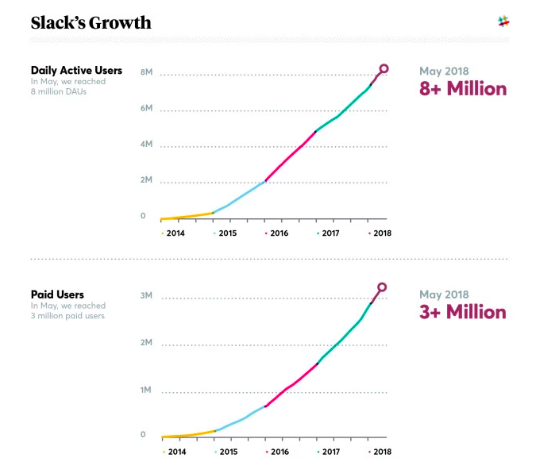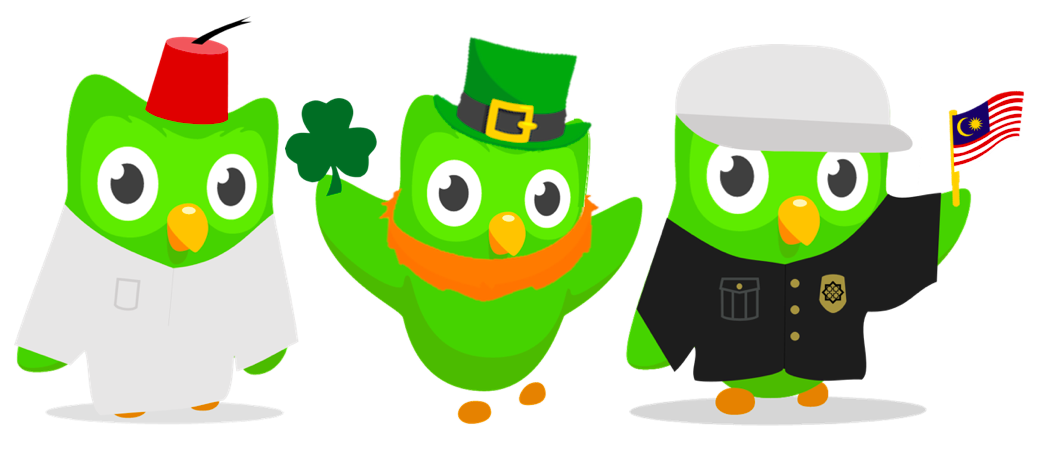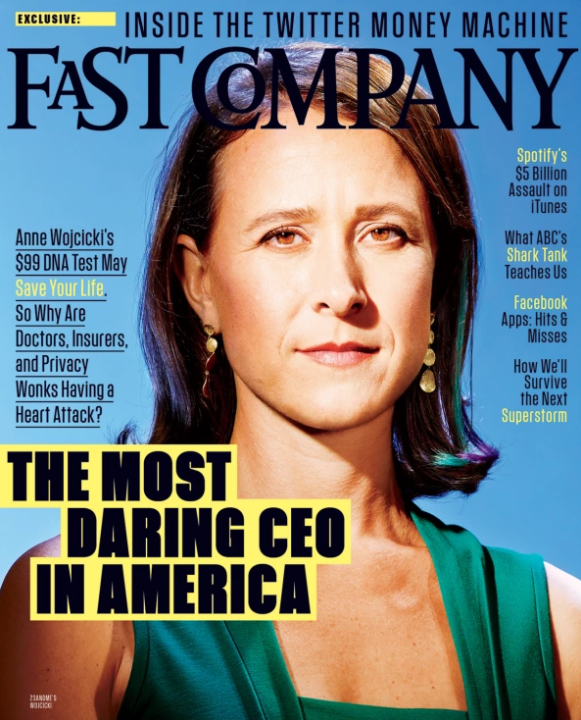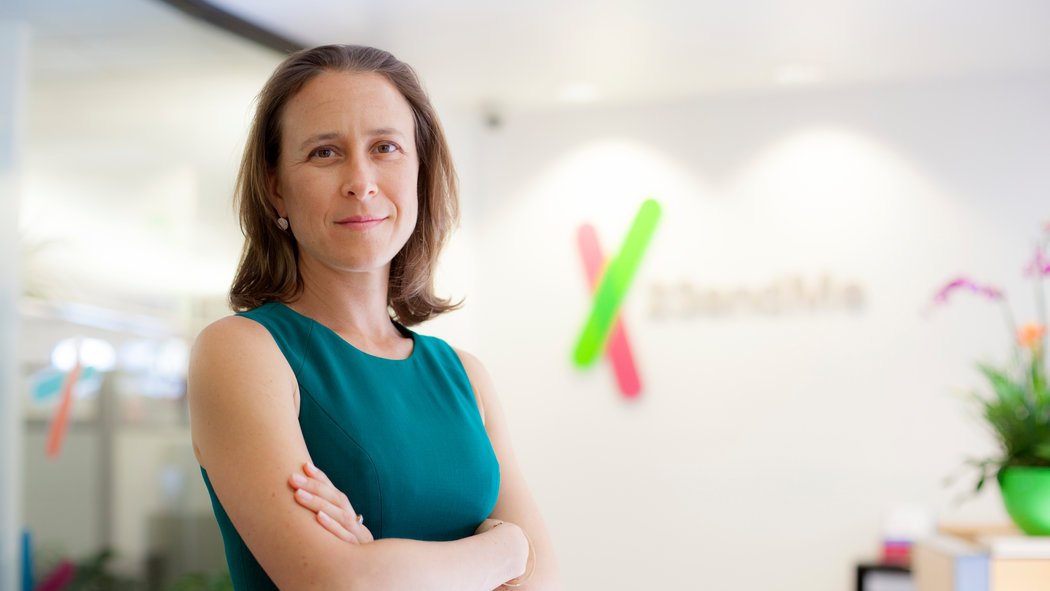By
James Nieman | 05/18/2018 | in

(Photo from Slate)
Sometimes, you must first fail before you can succeed.
Few can speak to this as much as Stewart Butterfield, the co-founder of team collaboration tool Slack.
In many ways, his “failures” are also his “successes”.
It started with Game Neverending, his first project, and his first public failure. Developed by his then company, Ludicorp, Game Neverending was intended to be an online multiplayer game for the masses, but it never saw the light of day. When it became apparent that the game would not survive, Butterfield shifted his focus to the game’s photo-sharing tool, turning it into its own stand-alone product, Flickr.
A year later in 2005, he sold Flickr to Yahoo for a reported $35 million.
Determined to make his game-developing dreams come true, he would try his hand again. With much of the same team from Ludicorp, Butterfield cofounded Tiny Speck, and began building a new online-game in Glitch.
It was during this development process where Butterfield would inspire a worldwide behavior change revolution – though he didn’t know it at the time.
Frustrated by existing communication tools, Tiny Speck developed its own tool to help better manage the creation of the game. During the three years leading up to the game’s launch, the Tiny Speck team, consisting of 45 people, had only sent 50 emails.
Then, at the end of 2012, the eureka moment came. Butterfield closed the book on Glitch, and Slack, the communications tool his team had developed, sprang forward.
But the Slack squad only knew how their team interacted on the platform, and if the product was to work across industries with varying company sizes and workflows, they needed a bigger sample size.
For the next seven months, Butterfield and his colleagues begged friends at other companies to trial Slack. This gave them the opportunity to see the tool from an outsider’s perspective, and each new company armed the team with unique observations and feedback that they would later use to optimize and tweak the product.
Finally, in August of 2013, Butterfield felt the product was polished enough to be shared more widely and announced a preview release. The launch amassed a large amount of media attention, and within 24 hours, 8,000 companies had signed up for the service. Two weeks later, that number doubled to 15,000. Slack was an instant hit.
That type of staggering growth, although unprecedented, was an accurate indicator of what was to come. Slack quickly became the fastest growing business-app ever, and was considered a unicorn shortly after its first year. Last September, just four years and a month after the company’s launch, it was valued at over $5B.
Which brings us to today, where Slack is used by 65 companies in the Fortune 100 and over 500,000 organization worldwide. Last week, Slack announced that it had reached 8M daily active users, a number that will only grow, living up to its billing as the place “where work happens for millions of people.”

How did it all happen? What was different about Slack?
Team Communication For the 21st Century
First and foremost, it was created at the perfect time. Built for the era of mobile phones and short text messages, Slack’s growth coincided with the rising trend of companies operating remotely, and offered a less formal, more user-friendly way of keeping in touch with co-workers.
Around the same time, Microsoft Office, Windows, and seemingly every other tech company that could were churning out new tools left and right. Each trying to better each other. In most cases, the competition was healthy, and the tools themselves evolved greatly. But what was left was a scattered ecosystem of tools and services. The fragmentation led to friction and inefficiency. While the tools themselves had improved, the user-experience was left behind. There was no glue to hold it all together.
Enter Slack, integrating all the tools and housing them all in one place. Twitter. Salesforce. Dropbox. Google docs. You name it, it’s all on Slack.
And when you combine that seamless third-party integration with a thoughtfully-designed interface, full of vibrant and playful colors, and an endless amount of customizable applications like to-do lists, reminders, project management tools, scheduling assistants, and hundreds more, what you get is a communications tool that boosts your productivity tenfold.
Perhaps the biggest reason for Slack’s growth is its customizability. Created for any workplace, the product can be catered to your team or individual needs. Channels can be made for departments, projects, office locations, or whatever you deem fit. If a channel becomes too loud, you can “mute” it. If you need to conduct deep, uninterrupted research, you can activate “Do Not Disturb” mode. You can customize “highlight words” that are important to you so that you are notified every time that word is mentioned – be it your name or an urgent project you’re working on. If you’re going to be busy for the day at work conference, or are going to in a long offline brainstorm, you can set your status to reflect that. Files, images, PDFs, spreadsheets and other documents can be shared in real-time with a simple drag and drop.
In group chats, or “channels”, Slack allows you to overhear conversations, giving you an ambient awareness of work developments that you do not get from email. If you want to share something confidential, you can do so through a private channel or direct message.
Files, images, PDFs, spreadsheets and other documents can be shared in real-time with a simple drag and drop. And everything on Slack, from notifications to links to images, are all searchable so that you can find what you need and find it fast.
Consistently evolving and introducing new features to meet user demands, Slack is delivering on its mission to make people’s working lives simpler, more pleasant, and more productive.
A Behavior Change Revolution
While it may not be obvious on the surface, Slack is one of the leading behavior change companies of our time.
In a medium post, written on his page, Butterfield states the following:
“The best – maybe the only? – real, direct measure of “innovation” is change in human behavior. In fact, it is useful to take this way of thinking as definitional: innovation is the sum of change across the whole system, not a thing which causes a change in how people behave. No small innovation ever caused a large shift in how people spend their time and no large one has ever failed to do so.”
“By that measure,” he goes on to say, “Slack is a real and large innovation”.
And he’s right.
Butterfield knew he couldn’t sell a “group chat system”. People simply wouldn’t buy that. Instead, what Slack sells is “organizational transformation.”
“We’re selling a reduction in information overload, relief from stress, and a new ability to extract the enormous value of hitherto useless corporate archives. We’re selling better organizations, better teams. That’s a good thing for people to buy and it is a much better thing for us to sell in the long run. We will be successful to the extent that we create better teams.”
This is not a one-to-one behavior change. Slack must be sold to companies, both massive and tiny, and everything in between. Companies that adopt Slack are betting on a massive, positive behavior change. They want effortless communication. They want to work more efficiently. They want a business tool that works for them rather than against them, helping them make more inspiring decisions and form more empowering habits.
“We’re asking a lot from our customers. We are asking them to spend hours a day in a new and unfamiliar application, to give up on years or even decades of experience using email for work communication (and abandon all kinds of ad hoc workflows that have developed around their use of email). We are asking them to switch a model of communication which defaults to the public; it is an almost impossibly large ask. Almost.”
The change is both dramatic and far-reaching. We know this to be true because we at DiMassimo Goldstein are a proud member of the Slack revolution.
We weren’t looking to abandon email entirely, but to reduce it, and Slack has done that. We found ourselves having too many meetings, which Slack has helped cut down. The transparent communication makes it the perfect place to review projects as a team, on the go, and from anywhere.
Put simply, it has made our work lives easier and most importantly, it has pushed the work we create to help inspire others forward.
That’s why Slack is our Inspiring Action Brand of the Month!
By
James Nieman | 11/17/2017 | in
 Photo from Business Insider
Photo from Business Insider
After he sold his second company to Google, Luis von Ahn received a phone call.
It was Bill Gates.
The richest man in the world, and co-founder of Microsoft, was personally recruiting the young computer scientist to join his team.
But for von Ahn, joining a world-changing company wasn’t enough. Like Gates, he needed to create his own.
So, the Guatemalan-born web wizard —who has become famous for combining humans and computers to solve large-scale problems that neither can solve alone — founded Duolingo, a free, science-based language education platform that is now the most popular way to learn languages online. And while von Ahn’s portfolio consists of several successful ventures, Duolingo is likely to be his masterpiece.
Von Ahn’s passion has always been rooted in the world of academia. A graduate of Duke University, who later received his Ph.D. in Computer Science from Carnegie Mellon, where he now serves as a professor, he knows the education system all too well.
Both sides of it.
He’s seen the prestige of the world’s most elite universities, and the wealth that feeds them. He’s also experienced the resources, or the lack thereof, of the schools in a developing country. This side, sadly, is much more prevalent globally, and it’s the problem von Ahn has made his life work to solve.
In countries like Guatemala, education does not bring equality to social classes, as some may think. It does the opposite. Those with money can buy themselves an education, while those without it can barely read and write. This system sets up career barriers that are almost always insurmountable, and only widens the divide between the upper and lower classes.
By launching Duolingo, von Ahn was taking a seat at the intersection of technology and human behavior, inspired to create a product that could change outcomes in more permanent and integral ways to tackle the global-scale problem of language learning.
The mission was simple: make language education free and accessible to everyone all over the world.
Why language?
Of the 1.2 billion people in the world learning foreign languages, 800 million of them satisfy three properties:
- They are learning English
- The reason they are learning English is to get a job
- They are from low socioeconomic classes
For these individuals, learning a language can be the gateway out of poverty, but doing so can cost up to $1,000 dollars. Without the money, and no other alternative, the odds are unfairly stacked against them. To change those odds, von Ahn would first have to change behaviors.
Behavior Change Marketing
Learning a language is difficult. Everyone wants to do it, but most give up. The key is making it a habit. Duolingo could never work unless a user visited it regularly, so the success of the company hinged on it becoming a regular behavior, which also meant dislodging other long-held behaviors.
And change, according to world-renowned behavioral economist, Dan Ariely, “comes not from the inside, but the outside. If you want people to lose weight, give them a smaller plate. You have to change the environment.”
For von Ahn, the environment was technology. How could behavioral design be used to prevent the poor retention rates of other language-learning softwares? How could he reinvent the teaching process to make it a memorable experience worth the consumers’ time?
You gamify it.
American psychologist and behaviorist, B.F. Skinner, once said, “No one really cares whether Pac-Man gobbles up all those little spots on the screen… What is reinforcing is successful play, and in a well-designed instructional program students gobble up their assignments.”
As the work of behavioral economists has shown us, consumer decision-making is not just about the availability of information. Instead, it’s about how that information is framed and delivered. By framing language-learning as a game, von Ahn was applying behavioral design to keep consumers coming back for more.
He and his team incorporated gameplaying elements to increase engagement. Like other mobile-game apps, Duolingo is friendly and fun. It uses images, video clips, and the microphone on the mobile device to not only help you learn words, but to recite and write them as well.
Behavioral science has proven that marketing efforts that activate goals have a much greater impact on consumers. Duolingo rewards right answers with “points.” Consecutive daily lessons can help the consumer build “streaks.”
“It’s like a video game, where you have to do something every day or you lose your rank,” says Gina Gotthilf, VP of Marketing and Growth for Duolingo.
The streaks give you virtual currency that can unlock bonus skills or purchase outfits for the game’s mascot, a green owl named Duo. Von Ahn picked an Owl because owls are associated with wisdom, and chose to make it green as a joke on the company’s co-founder, Severin Hacker, who’s least favorite color is green (seriously).

An educational resource that’s actually enjoyable to use, Duolingo combines fun with function in a way that no language-learning platform has before.
A major point of differentiation amongst competitors like Rosetta Stone, other than the price, is DuoLingo’s use of Artificial Intelligence. In his research, von Ahn discovered that the hardest part of learning a new language is overcoming the fear of sounding it out in front of others. With AI chatbots, DuoLingo users can practice without pressure, preparing them for real-life conversations without the awkwardness and anxiety that come with the learning process.
The performance data also allows Duolingo to measure how effective different teaching methods are. If a person makes a mistake, or even hesitates to answer a certain question, the app registers that behavior, and will serve a new series of questions to help that person overcome that difficulty.
The Duolingo team has conducted thousands of A/B tests exploring the biases and cognitive shortcuts that affect how people absorb and process information. In doing so, they continue to build on their mastery of behavioral techniques, analyzing how millions of people learn at once, to create the most effective educational system possible, and then tailor it to each student.
For example, if Duolingo wanted to know if people learned faster when being taught plurals before adjectives, or vice versa, they would simply split the next 400,000 users into two groups and test each. Once they have their answer, they can implement it across the entire platform. This allows Duolingo to get smarter and more efficient as the company grows; and it’s working. A recent study by the City University of New York shows that 34 hours of learning a language on Duolingo is the equivalent of an entire university semester learning that same language.
Today, with over 200 million users, it is the most downloaded educational app in the world. In the United States, there are more people learning languages on Duolingo than there are in the nation’s school system.
Outside the U.S., entire countries like Costa Rica and Columbia have adopted Duolingo into every public school that has access to the internet, and the company is currently working on creating offline platforms for countries that do not have stable or reliable internet connectivity.
Von Ahn wanted to show the world that true equality exists only when money cannot buy better educations; and, while he’s just getting started, he realized his impact when he received news about a familiar friend.
Bill Gates used Duolingo to learn French.
The richest man in the world and kids in developing countries – both using the same educational tool to learn.
Now that’s inspiring action.
By
James Nieman | 09/21/2017 | in
If you could give people access to their own DNA, and interpret what it could potentially mean for their health in the future — would they change the way they lived? Would they exercise more? Make alterations to their diet? Stop smoking?
Would they change the way they behave everyday?
That’s the bet that Anne Wojcicki waged when she started 23andMe, a world-changing, first of its kind direct-to-consumer genetic testing company that aims to shift the way we think about healthcare from its current diagnostic model to one based on prevention.
Before launching 23andMe, Wojcicki had already led a successful career as a health care analyst on Wall Street. This career path also came with a front-row seat to the red tape and lack of action that was plaguing the health care industry. Convinced that America needed a more efficient and more consumer-focused way to treat illness and invent drugs, she decided to pioneer a path forward. By founding 23andMe, she made championing that change her life purpose.
 It’s a mission that landed her on the front page of Fast Company, accompanied by the bold headline “The Most Daring CEO in America.”
It’s a mission that landed her on the front page of Fast Company, accompanied by the bold headline “The Most Daring CEO in America.”
“We’re not just looking to get a venture-capital return.” Wojcicki told Fast Company. “We set out with this company to revolutionize health care.”
23andMe’s $999 saliva kit, which was delivered right to customers’ doorstep, allowed consumers to track their ancestry. It analyzed their DNA, tested for 254 health risks, and alerted consumers on their susceptibility to certain diseases – all without having to go to a doctor. Just a few weeks after submitting your kit, the results would come in with tips and guidance on how to reduce those health risks. Wojcicki was using technology to shorten the cycle of optimization.
Having this type of information could potentially spur people to make healthier lifestyle choices. Learning that you are at a higher risk for a certain disease, simply because of your genetics may propel you to mitigate that risk by making changes where you can, like quitting smoking or beginning to exercise more.
After a blazing hot start, the company’s personal genome test kit would go on to be named “Invention of the Year” by Time Magazine in 2008 – just two years after the brand was launched.
More venture capitalist funding came pouring in, and 23andMe drove the prices of its tests down from $999 in 2007, to $399 in 2008, to $99 in 2012. The product was intentionally being sold well below its marketplace cost, because the real growth potential, and the world-changing impact that comes with it, doesn’t lie in the saliva kits.
Instead, 23andMe was steadily building a gold mine of health and DNA data by building on its wide community of consumers – a valuable commodity to pharmaceutical companies, hospitals, and even governments.
Each consumer is asked to participate in research, with a clear majority of them providing consent. All of the information gathered is under anonymity, with no individual data being sold. Through partnerships, this aggregated data could now be used to research and discover cures for diseases that spring up from troublesome genetic mutations.
23andMe was disruptive. It utilized technology to supplant an ingrained habit with something that didn’t formerly exist. An entirely new experience – and one that was less expensive, more convenient, and more consumer-driven.
And the disruptive brand is one that is met with confusion, uncertainty and resistance – and, in November of 2013, that resistance came by way of the FDA.
With a harshly worded email, the U.S. Food and Drug Administration demanded 23andMe to withdraw all its tests for genetic risks related to health from the market – limiting the company to providing information about ancestry and ancestry alone.
23andMe had failed to communicate with the agency and meet their compliance standards – leading their health analysis to being terminated due to the USFDA’s growing concern of inaccurate results — and the consequences that come with it.
And while its popular ancestry product has brought us hundreds of heartwarming stories, like this man who gained an entire family from conducting the test, Wojcicki founded 23andMe with a higher purpose in mind.
She and her company were in a difficult spot. Following the moratorium, sign-ups had dropped by more than 50 percent. The company was barely surviving on their ancestry services. This was a sink-or-swim moment.

But Wojcicki was a challenger, and 23andMe was a challenger brand. She started the company with a vision, and she wasn’t going to separate what they were doing from why they were doing it. This was simply another problem she had to solve – and when you have an inspiring idea, nothing is insurmountable.
If 23andMe was going to survive, Wojcicki would have to find a way to cut through the red tape. With her back against the ropes, she and her team began working closely with the FDA.
Two years later, in 2015, the FDA granted 23andMe approval for a different kind of testing. This test would be focused on “carrier status” reports, which tell you if you have a copy of a mutated gene for a disease like cystic fibrosis or sickle cell anemia. The mutation would not affect the consumer directly, but it could affect their future children. Still, 23andMe was not authorized to tell the consumer about their personal risk.
A far cry from the 254 tests the company used to offer, the FDA decision was a still victory for 23andMe. It was the first step in the right direction, albeit a small one.
Determined to lift that bar even further, the 23andMe team continued to work closely with the FDA, and earlier this year that hard work was finally rewarded.
On April 6, 2017, the FDA came out with a press release allowing the marketing of 23andMe Personal Genome Service Genetic Health Risk (GHR) test for 10 disease or conditions, including Parkinson’s and Alzheimer’s disease.
This was a groundbreaking moment. The first direct-to-consumer test authorized by the FDA that provides information on an individual’s genetic predisposition to certain medical diseases or conditions.
Until that moment, the only way for people to get such genetic tests was to see a medical professional. Now, 23andMe consumers can log in to an online account and see their report and its interpretation. Behaviors were being changed.
Wojcicki discovered that she had to work with the FDA, rather than against them, to really drive that change. And in doing so, she proved that there is a market for direct-to-consumer health care.
The door is now open. The FDA has established new and less rigorous guidelines for approving at-home genetic testing, which will allow other direct-to-consumer health companies to enter the market with less resistance. Plenty of competitors are already waiting in the wings.
Today, the company is still growing rapidly. Its products have been used in several research projects, including studies on female fertility, depression, Parkinson’s disease, and even nail biting.
With a current valuation of $1.1 billion, the company now boasts well over two million customers. This past June they were ranked #4 on MIT Technology Review’s 50 Smartest Companies List – right behind Jeff Bezos’ Amazon and Elon Musk’s SpaceX.

Behavior change is hard to create – but courageous marketers who obsess over helping people make more inspiring decisions and live more empowering lives will stop at nothing to do so.
Anne Wojcicki is that type of inspiring action marketer.
That’s why 23andMe is our Inspiring Action Brand of the Month!
By
James Nieman | 08/22/2017 | in
Sallie Krawcheck had an inspiring idea:
Create a robo-advising platform specifically designed for women.
Like most inspiring ideas, it came from true aspiration — and few things mobilize and stimulate humans more than true human aspirations.
That aspiration? To help close the investment gender gap. But to truly understand the roots of Krawcheck’s aspirations, you must first understand her background.
As the former CEO of Merrill Lynch Wealth Management, and the CFO of Citigroup prior to that, Krawcheck spent much of her career being the only woman in the room. Finance is a “for men, by men” industry, and few people in the world have been as exposed to — or as outspoken about — that disparity as much as Krawcheck.
In regards to Wall Street’s unofficial mascot, Krawcheck asks Forbes, “Does it get any more male than that? Maybe a snake.”

The quantitative research is staggering. Just 16 percent of the nation’s 311,000 financial advisors are female. Due to this imbalance, investing is tailored towards men’s interests, leading women to put their money in the bank rather than invest it. Seventy-one percent of all assets controlled by women are held as uninvested cash.
To Krawcheck, this translates to “us boss ladies missing out on major market-gain opportunities and losing out on inflation.”
The reality is that the financial industry does not favor women. It doesn’t speak to their unique financial needs, or address their goals, or speak their language. Women aren’t as interested as men in “beating the market.” Instead, they prefer to think of their investments in terms of goals, like buying a home, starting a business, or paying off a student loan. And as a result, far too many women are sitting on the sidelines instead of making their money work harder for their dreams.
Frustrated and determined to make a difference, Krawcheck had her insight: Make investing seem like a game worth playing by making it appear less like a game.
In 2014, she put that insight to action by launching Ellevest, a female-focused robo-advising platform.
Unlike other robo-advising platforms, Elllevest puts women first. Krawcheck and her team spent over 100 hours interviewing women to ensure that the entire user experience was geared toward the way women think about their money. It connects with the female investor on a deeper, more psychographic level by putting a hyper focus on the realities of being a woman — for example, the greater likelihood of women taking time out of the workforce. Or the fact that their salaries, in general, tend be lower over the course of their careers despite peaking earlier than men’s. It considers the five extra years of a woman’s lifespan when planning for retirement. All of these factors should have a strong influence on investing strategies, and yet Ellevest is the only company making an active effort to recognize them.
And it’s working. This past March, Ellevest had over 3,000 accounts with $18 million in assets.
Krawcheck has created a brand that allows women to inspire action in themselves. She has given her consumers a self-actualizing experience, and nothing is more valuable to a consumer today. Opening an account with Ellevest means investing in yourself. It’s a company on an inspiring mission to close the investment gender gap, and women want to be a part of that story.
That’s why Ellevest is our Inspiring Action Brand of the Month!




 Photo from
Photo from 
 It’s a mission that landed her on the front page of Fast Company, accompanied by the bold headline “The Most Daring CEO in America.”
It’s a mission that landed her on the front page of Fast Company, accompanied by the bold headline “The Most Daring CEO in America.”

